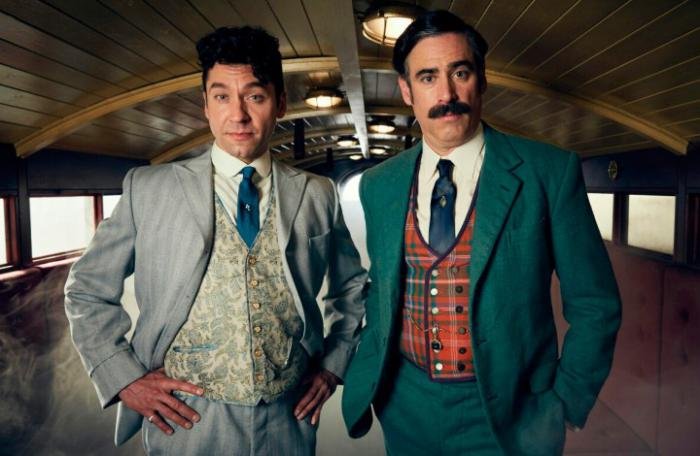
Houdini and Doyle
Among the criminal and detective series to which Multivision has accustomed us at night, a rare advert snuck in: Houdini & Doyle
Translated and edited by Walter Lippmann for CubaNews.

Photo: Internet
Among the crime and detective series to which Multivision has accustomed us at night, a rare advert has crept in: Houdini & Doyle. What did the famous escapist, precursor of David Copperfield’s truculence, have to do with the creator of Sherlock Holmes? How much truth and how much imagination is there in the approach to the cases developed throughout the ten chapters conceived by David Shore, Dr. House’s own, in the service of the 2016 British-Canadian co-production?
The truth was that, in real life, Harry Houdini (Budapest, 1874-Detroit, 1926) and Arthur Conan Doyle (Edinburgh, 1859-Crowborough, 1930), met, dealt with and made enemies. The bond and the antagonism had a certain basis. The writer who applied with tenacity and contumacity the deductive method became fanatical about occultism. meanwhile, the magician who made an epoch in Europe and the United States by untying chains, overcoming immersions and weaving optical illusions, disbelieved in spiritualism and appealed to reason to explain complex phenomena. So much so that he publicly denounced the medium who sold him an alleged message sent by his mother from the beyond: the text, headed by a Christian cross, was written in impeccable English. The magician’s mother was ignorant of that language, spoke in Yiddish, and professed Judaism.
Again and again, in each chapter of the series, the two confront each other in the effort to decipher mysteries and misunderstandings come to light. There is no progression in their views, for when Doyle (Stephen Mangan) seems to fail, and Houdini (Michael Weston) is stubborn, the case is solved by plausible, though sophisticated, explanations that leave a margin of doubt for Houdini to admit the possibility of supernatural intervention, and Doyle, more defeated than convinced, becomes more like Holmes than himself.
Shore and the Canadian scriptwriter David Titcher, known among us for the series The Librarians, got their hands on a third character, Detective Stratton (Rebecca Liddiard), the first woman with that degree in the English police force, a fact that was never sufficiently taken advantage of -it would have been an interesting feminist note- and ended up paling in the face of the antagonists’ clashes.
Neither by polishing the epochal reconstruction to the last detail, nor by mixing ingredients from the gothic novel and the psychological thriller, nor by putting into the plot, to the cannon, real characters, such as the inventor Thomas Alva Edison and Bram Stoker, the creator of Dracula, managed to hold the artistic breath of the series, which was canceled at the end of the first and only season. Critics recalled the counterpoint between Houdini and Doyle as a washed-up version of the debates between Mulder and Scully in the X-Files.

You must be logged in to post a comment.